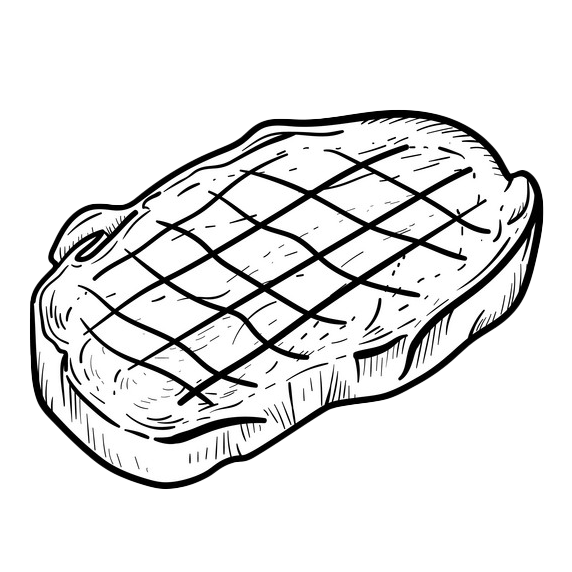Today's Diets Explained
A Quick Look at Today's Most Popular Diets
From low carb to no carb, no meat to all things fat, there are quite a number of diets out there with very different approaches yet promising the same results: to get healthy, feel good, and possibly lose weight. We’ll take a look some of the most popular ones, the concepts behind them and what they say to eat, and the health benefits you might receive if you stick to a certain food plan.
The Ketogenic Diet
During the past couple of years the Keto diet has taken the health world by storm. Think of it as the Atkin’s Diet (low-carb) leveled up several notches. This diet consists of no carbohydrates and lots of fat. It works via Ketogenesis (which means “generating ketones”), a process in which your body naturally creates energy from fat when carbohydrate sources are low. The keto diet is essentially a way to place the body into a starvation-like state so that body fat is reduced quickly...without actually starving yourself. In order for it to work, you have to eliminate all carbs (yes, including fruit) and fill up on proteins and fats. Keto diets include plenty of meat, eggs, cheese, fish, nuts, oils, seeds, and vegetables. A few studies have found that obese patients can use the keto diet to safely lose weight. It has also been used successfully with some epilepsy patients to reduce seizures. A ketogenic diet is also connected to improved blood sugar control for type 2 diabetes patients and helps increase HDL — the “good” type of cholesterol.
The Mediterranean Diet
Let’s travel to Greece for a moment. If you are craving fresh fish, lots of vegetables, and maybe some fresh bread with olive oil, the Mediterranean diet might be calling your name. The basics of this diet are: eat whole foods, consume plenty of vegetables, and don’t be afraid of eatring healthy fats like extra virgin olive oil, cheese, and fatty fish. The Mediterranean diet has been recognized for many years for its numerous health benefits: a lowered risk of heart disease and stroke, decreased risk of Alzheimer’s, and promotion of healthy weight management and/or loss. The best part? Eating as one does in the Mediterranean is more like a nutrition plan than a strict diet, more flexible than other diets and therefore an easier regimen to adopt.
The Paleo Diet
The Paleo diet is similar to the Keto diet, but with some key differences. Rather than focusing on no carbohydrates and all fat or protein, a paleo diet mimics how our pre-agricultural, hunter-gatherer ancestors ate: fish, meat, eggs, vegetables, fruits, nuts, seeds, healthy fats, and oils. Things to avoid include processed foods, sugar, grains, most dairy products, legumes, artificial sweeteners, and vegetable oils. A simple guideline to follow is this: If something looks like it was made in a factory and/or is processed, skip it. Several studies suggest that a paleo diet can lead to significant weight loss while reducing the risk of chronic disease.
The Whole 30 Diet
If you are looking for a diet that doesn’t have to last forever, try Whole 30, which is designed as a 30-day reset that eliminates certain food groups throughout the month. The premise is that many people are sensitive to certain foods— even ones deemed healthy like grains and beans. Over the 30 days, you eliminate specific food groups and take note of how your body reacts. You’ll mainly be eating vegetables and fruits, with a moderate amount of organic, fish, meat, eggs, and nuts also on the menu. Sugar, alcohol, grains, legumes, dairy, certain additives, and desserts are strictly forbidden. Some feedback from Whole 30’ers say that throughout and after the diet, they have experienced weight loss, better energy levels throughout the day, improved focus, and better sleep.
The Vegan Diet
Whether for personal health or environmental reasons, or personal beliefs, a growing number of people are choosing to go vegan, which means that any food derived from animals is completely off the dinner table. Obvious, off-limit foods include meat, dairy products, and eggs. Some less-than-obvious foods that are also restricted are Caesar dressing (anchovies), honey (from bees), and gelatin (from animals). Vegans tend to eat a lot of vegetables, fruits, and whole grains, and get much of their protein through eating legumes and seeds. A vegan diet may protect against certain cancers, many have had successful weight loss or management by going vegan. Just watch out for your Oreo consumption; some favorite flavors are vegan.
A low-FODMAP Diet
If you’ve seen the words “low-FODMAP” on certain news headlines, there is a good chance you have no idea what it means. While it may sound intimidating, this diet essentially restricts certain carbohydrates that naturally don’t absorb well in the small intestine. The concept of the low-FODMAP diet, by restricting these hard-to-digest carbs, is to help reduce bloating, digestive distress, and other types of irritable bowel symptoms. Foods you can eat on a low-FODMAP diet include vegetables and fruits, fresh fish, hard cheeses, meat, eggs, rice, oats, quinoa, non-dairy milk, nuts, and seeds. As for the name “FODMAP,” it is actually an acronym that stands for certain carbs that are resistant to digestion: fermentable oligo-, di-, monosaccharides and polyols. This type of diet has been mainly studied in patients with irritable bowel syndrome (IBS), where many have reported decreased instances of gas, bloating, diarrhea, constipation, and stomach pain.








